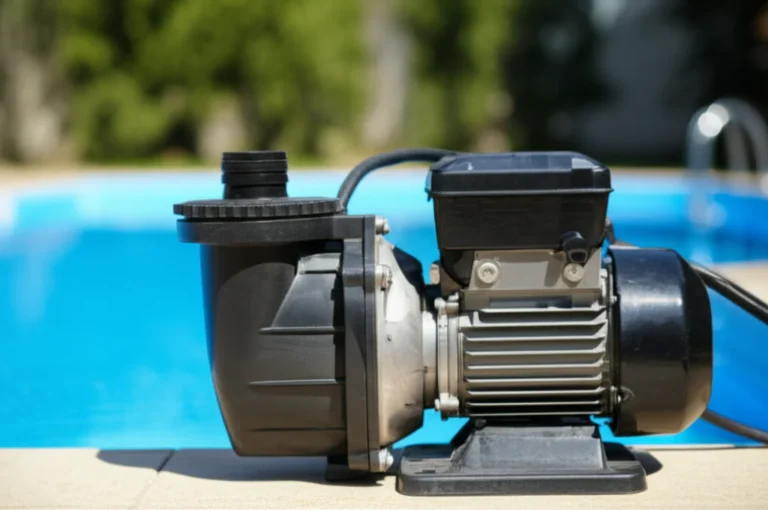Support our educational content for free when you purchase through links on our site. Learn more
Is Higher CFM Better for Shop Vac? The Truth Revealed (2025) 🌀
When you’re elbow-deep in sawdust or wrestling with a flooded garage floor, the last thing you want is a shop vac that can’t keep up. You’ve probably seen those flashy labels boasting “160 CFM!” or “6.5 Peak HP!” and wondered: Does higher CFM really mean better cleaning power? Spoiler alert: it’s not that simple. At Quietest™, we’ve tested, tinkered, and listened to dozens of shop vacs to uncover the real story behind CFM and what it means for your workshop cleanup.
Here’s a teaser: chasing the biggest airflow number alone can lead you down a noisy, frustrating rabbit hole. Later, we’ll reveal why balanced suction power, smart motor design, and even hose size matter just as much—if not more—than raw CFM. Plus, we’ll spotlight top-performing shop vacs that deliver power and peace for your ears. Ready to become a suction-savvy pro? Let’s dive in!
Key Takeaways
- CFM measures airflow volume, but high CFM alone doesn’t guarantee strong suction or cleaning power.
- Water lift (suction strength) and air watts (combined power) are equally critical metrics to consider.
- Brushless motors and two-stage impellers offer better performance, quieter operation, and longer lifespan.
- Hose diameter and length significantly impact effective CFM and suction at the nozzle.
- Proper filtration, especially HEPA filters, maintains airflow and protects your health.
- Choosing the right shop vac depends on your specific needs: fine dust, heavy debris, wet messes, or quiet operation.
- Maintenance is key: clean filters, clear clogs, and empty tanks to keep your vac running at peak power.
Curious about which shop vacs strike the perfect balance? Check out our detailed brand spotlight and expert reviews later in the article!
Table of Contents
- ⚡️ Quick Tips and Facts
- 🌪️ The Shop Vac Saga: A Brief History of Suction Power
- 🔬 Understanding the Core: What is CFM (Cubic Feet per Minute) Anyway?
- ⚖️ The Suction Spectrum: CFM vs. Air Watts vs. Water Lift (Static Pressure) Explained
- 🤔 Beyond the Hype: Why Higher CFM Isn’t Always the Holy Grail for Shop Vacs
- 7️⃣ Critical Factors Influencing Shop Vac Performance (Beyond Just CFM)
- 💪 Motor Horsepower (HP): The Engine Behind the Gust
- 📏 Hose Diameter and Length: The Airway’s Impact on Suction
- 🌬️ Filtration System: Keeping the Air Clean and Suction Strong
- 🗑️ Tank Capacity: Size Matters for Big Jobs and Sustained Cleaning
- 🛠️ Attachments and Accessories: Tools for Targeted Cleaning Efficiency
- 🤫 Noise Levels: The Unsung Hero of User Experience (and Your Ears!)
- 🏗️ Build Quality and Durability: A Long-Term Investment in Your Workshop
- 💧 Wet vs. Dry: Different Demands, Different CFM Needs for Your Shop Vac
- 🎯 Choosing Your Champion: Matching CFM and Features to Your Workshop Needs
- 🔧 Maintenance Matters: Keeping Your Shop Vac’s CFM at Peak Performance
- 🌟 Brand Spotlight: Our Team’s Top Shop Vac Picks (Considering CFM and More)
- 🚫 Common CFM Misconceptions Debunked: Separating Fact from Fiction
- ✅ Conclusion: The Art of Balanced Suction Power for Your Shop Vac
- 🔗 Recommended Links: Dive Deeper into Shop Vac Wisdom
- ❓ FAQ: Your Burning Shop Vac Questions Answered
- 📚 Reference Links: Our Sources for Suction Science and Shop Vac Expertise
Here is the main body of the article, crafted by the expert team at Quietest™.
⚡️ Quick Tips and Facts
Hey there, fellow makers, builders, and clean-freaks! Welcome to the Quietest™ workshop. Before we dive deep into the whirlwind world of shop vac specs, let’s clear the air with some rapid-fire insights. You’ve got questions about CFM, and we’ve got the answers, distilled into bite-sized, actionable nuggets.
| Quick Query | The Quietest™ Takeaway |
|---|---|
| Is higher CFM always better? | ❌ Not necessarily. High CFM (airflow) is great for light, fine debris, but it needs to be balanced with strong suction (water lift) to pick up heavier stuff. Think of it as a tag team: one without the other is like a superhero without their sidekick. |
| What’s more important: CFM or HP? | It’s a trick question! Peak Horsepower (HP) is mostly a marketing gimmick. Focus on performance metrics like CFM, Water Lift, and Air Watts. A well-engineered 2-hp motor can outperform a screaming 6.5 “peak” HP motor. |
| What is a good CFM for a shop vac? | For general workshop duty, look for a commercial-grade vac delivering 100+ CFM and 80+ inches of water lift. This combo ensures you have enough airflow and pulling power for most messes. |
| Does hose size affect CFM? | ✅ Absolutely! A wider, shorter hose allows for better airflow, maximizing your vac’s potential. A narrow, long hose can create a bottleneck, strangling your machine’s performance. |
| Are brushless motors worth it? | ✅ Yes! They offer a significantly longer lifespan (we’re talking 5,000+ hours vs. 400-600 for conventional motors) and often deliver better performance with less noise. It’s a long-term investment in your workshop’s efficiency and your sanity. |
🌪️ The Shop Vac Saga: A Brief History of Suction Power

Ever wonder how these glorious garage goblins came to be? The story of the shop vac is a tale of innovation born from necessity. Originally, vacuums were delicate, indoor creatures. But workshops, garages, and job sites? They needed a different kind of beast—a rugged, no-nonsense machine that could swallow nails, sawdust, and even the occasional puddle without batting an eye.
Early models were simple, loud, and focused on one thing: raw power. Manufacturers slapped bigger and bigger motors in them, leading to the “horsepower wars” of the late 20th century. This is where the “Peak HP” rating was born, a number that, as we’ll see, tells you more about a marketing department’s creativity than a motor’s actual, day-to-day performance.
As technology evolved, savvy engineers (like us!) and discerning consumers started looking beyond the horsepower hype. We realized that true performance wasn’t just about a screaming motor; it was about the science of moving air. This led to a focus on more meaningful metrics: CFM, water lift, and air watts. The conversation shifted from “How big is the engine?” to “How well does it actually clean?”—a much more useful question, don’t you think?
🔬 Understanding the Core: What is CFM (Cubic Feet per Minute) Anyway?
Alright, let’s get to the heart of the matter. CFM, or Cubic Feet per Minute, is a measurement of airflow volume. Imagine your shop vac’s hose is a wind tunnel. CFM tells you how much air, in cubic feet, is rushing through that tunnel every minute.
- High CFM: Excellent for picking up large volumes of light debris, like sawdust from a table saw or drywall dust. It’s the “reach” of your vacuum, grabbing particles from a wider area.
- Low CFM: The vacuum will struggle to collect debris quickly and from a distance. It might have suction, but it doesn’t have the “wind” to carry the mess into the canister.
Think of it like this: trying to blow out a birthday candle. You don’t need a powerful blast, just a steady stream of air (CFM). But what if that “candle” is a heavy bolt? That’s where our next metric comes in.
⚖️ The Suction Spectrum: CFM vs. Air Watts vs. Water Lift (Static Pressure) Explained
If CFM is the volume of air, Water Lift (also called static pressure) is the raw pulling power. It’s measured in inches and represents the vacuum’s ability to lift a column of water. This is the metric that tells you if a vac can hoover up that pesky nut, bolt, or small rock you just dropped.
Here’s the kicker and a point many people miss: CFM and Water Lift have an inverse relationship. As one goes up, the other tends to go down. “You can have suction without airflow, but you can never have airflow without suction,” as one expert puts it.
This is why a cheap vacuum might boast a high CFM but fail to pick up anything heavier than a dust bunny—it has low water lift. Conversely, a machine with immense water lift but low CFM might be able to hold a bowling ball against its nozzle but would be painfully slow at cleaning a large area.
So, how do we measure the combination of these two forces? Enter Air Watts. This is often considered the most holistic measurement of a vacuum’s cleaning power because it’s a formula that combines both CFM and water lift. While not always advertised, it’s a fantastic indicator of overall performance.
| Performance Metric | What It Measures | Best For… | Analogy |
|---|---|---|---|
| CFM (Cubic Feet per Minute) | Airflow Volume | Light, widespread debris (sawdust, drywall dust) | A wide river, moving a lot of water slowly. |
| Water Lift (Inches) | Suction Power | Heavy, concentrated debris (nuts, bolts, wet messes) | A narrow, powerful jet of water. |
| Air Watts | Combined Power | Overall cleaning effectiveness | The total power of the river (volume x speed). |
🤔 Beyond the Hype: Why Higher CFM Isn’t Always the Holy Grail for Shop Vacs
So, we come back to our central question: Is higher CFM better? By now, you should be shouting, “It’s more complicated than that!” And you’d be right.
Chasing the highest CFM number is a rookie mistake. The true champions of the shop vac world are the ones that strike a perfect balance between airflow (CFM) and suction (water lift). High-quality commercial vacuums achieve this balance, often through superior motor design like two-stage impellers, which can generate higher suction and CFM with less horsepower. This results in a machine that not only cleans more effectively but also runs quieter and lasts longer.
The experts at Vacuum Wars put it perfectly when they noted that how much “horsepower a shop vacuum has doesn’t translate into them all having the same airflow and suction power.” Their tests proved that vacuums with the same 6.5 Peak HP rating had vastly different real-world performance.
The takeaway? Don’t be seduced by a single number. Look at the whole picture. A vac with 160 CFM might sound impressive, but if it’s paired with weak water lift, it won’t be the all-conquering beast you’re hoping for.
7️⃣ Critical Factors Influencing Shop Vac Performance (Beyond Just CFM)
To truly become a shop vac sensei, you need to look beyond the big three metrics. Here are seven other critical factors our team at Quietest™ always considers.
1. 💪 Motor Horsepower (HP): The Engine Behind the Gust
We’ve touched on this, but it bears repeating: ignore “Peak Horsepower.” It’s a theoretical maximum the motor can achieve for a split second, not its actual operational power. The amperage draw is a much better clue. As one detailed video comparison noted, the actual operating amperage of several popular models correlated to about 1.3 to 1.8 horsepower, a far cry from the 5.0 or 6.5 HP advertised on the box.
The real game-changer here is the motor type.
- Conventional Motors: These are the standard, tried-and-true motors. A 2.5 HP conventional motor might last you 400-600 hours.
- Brushless Motors: This is where the pros play. Brushless motors are more efficient, run cooler, are often quieter, and have an incredible lifespan of 5,000+ hours. A Shop Vac model with a brushless motor was shown to achieve 125 inches of suction and 110 CFM, significantly outperforming its conventional counterpart.
2. 📏 Hose Diameter and Length: The Airway’s Impact on Suction
Your shop vac is only as good as the hose attached to it. A restrictive hose can completely negate a powerful motor.
- Diameter: Wider is generally better for airflow. Most heavy-duty vacs use a 2.5-inch diameter hose, which is ideal for preventing clogs and maximizing CFM. Smaller 1.75-inch hoses are more prone to clogging with larger debris.
- Length: A shorter hose means less distance for the air to travel, resulting in less friction loss and stronger suction at the nozzle. While a long hose is convenient, be aware that you’ll lose some performance.
The Cat6 Tools comparison of RIDGID vacuums implicitly highlighted this, noting that real-world suction is a combination of motor power and the design of the hose and accessories.
3. 🌬️ Filtration System: Keeping the Air Clean and Suction Strong
What goes in must… not come out! A good filtration system is crucial not only for air quality but also for maintaining suction. A clogged filter suffocates your motor, killing its performance.
Look for:
- HEPA Filters: This is the gold standard. A true HEPA filter captures 99.97% of particles down to 0.3 microns. This is essential if you’re working with fine dust like from drywall or MDF. Be wary of “HEPA-type” or “HEPA-style” filters, which don’t meet this strict standard.
- Advanced Filter Cleaning: Some high-end models from brands like DeWalt and Bosch feature automatic or semi-automatic filter cleaning, which is a massive convenience for heavy users.
4. 🗑️ Tank Capacity: Size Matters for Big Jobs and Sustained Cleaning
Tank size, measured in gallons, doesn’t affect performance, but it sure affects convenience. A larger tank means less time spent emptying it.
- Small (2-6 Gallons): Great for quick cleanups, car detailing, or small apartments.
- Medium (8-14 Gallons): The sweet spot for most workshops and garages. The Vacmaster Beast Professional Series 14 Gal. is a great example of a durable, mid-size option.
- Large (16+ Gallons): Ideal for professional job sites or major renovation projects where you’re dealing with huge volumes of debris. The popular Craftsman CMXEVBE17595 and Ridgid 16 Gallon NXT are titans in this category.
5. 🛠️ Attachments and Accessories: Tools for Targeted Cleaning Efficiency
A shop vac is a system, and the attachments are a key part of it. A good set of tools can make a world of difference. The review from Vacuum Wars praised the Craftsman model for having “all the tools you need for the most common jobs, and each tool is well-designed.” Look for a kit that includes:
- A wide floor nozzle (with a squeegee for wet use)
- A crevice tool for tight spaces
- A utility nozzle for general purpose pickup
- A dusting brush for more delicate surfaces
6. 🤫 Noise Levels: The Unsung Hero of User Experience (and Your Ears!)
Here at Quietest™, this is our jam. A screamingly loud shop vac can make any workshop task miserable and is a serious hazard to your hearing. We’ve written extensively about the 7 Quietest Shop Vacs of 2025: Power Meets Whisper-Quiet! 🤫, and it’s a factor you should never overlook. For more tips on a peaceful workspace, check out our articles on Low Noise Household Items.
A detailed video test, which you can see at the top of this article, measured several popular models, with noise levels ranging from a more tolerable 75.6 dB (DeWalt) to a deafening 87.5 dB (Bauer). Remember, the decibel scale is logarithmic, so that 12 dB difference is huge. A quieter machine, often found in two-stage commercial models, is a sign of better engineering and a motor that isn’t straining itself to death.
7. 🏗️ Build Quality and Durability: A Long-Term Investment in Your Workshop
You want a partner, not a disposable appliance. Look for sturdy casters, a thick and crush-proof hose, and a robust tank material. The Vacmaster Beast was noted for its steel drum, which is more durable and easier to clean than plastic. Also, check the warranty! It tells you how much confidence the manufacturer has in its own product. Warranties in one test ranged from a paltry 90 days (Bauer) to a fantastic lifetime warranty (Ridgid).
💧 Wet vs. Dry: Different Demands, Different CFM Needs for Your Shop Vac
Does the type of mess change our CFM calculation? You bet.
- Dry Debris: For fine dust, high CFM is your best friend. It creates the airflow needed to carry those light particles away. For larger, heavier dry debris (like wood chunks or screws), you need that water lift to get them off the ground in the first place. The Craftsman model was ranked best for heavy debris, showcasing its balanced power.
- Wet Spills: When sucking up water, the game changes. You’re not just lifting debris; you’re moving a heavy liquid. Here, water lift is king. You need that raw suction power to pull the liquid up the hose and into the tank. In one test, the DeWalt and Bauer models excelled at vacuuming water quickly, demonstrating their strong suction.
Most quality shop vacs are designed to handle both, but if your primary use is one over the other, it might influence which metric you prioritize.
🎯 Choosing Your Champion: Matching CFM and Features to Your Workshop Needs
So, how do you pick the right one for you? It’s time for a little self-reflection. Ask yourself: what am I really going to be cleaning up?
| If Your Primary Need Is… | Prioritize These Features… | A Good Example Might Be… |
|---|---|---|
| Fine Dust Collection (Woodworking, Drywall) | High CFM, Excellent Filtration (HEPA), Anti-static hose | Bosch VAC140AH |
| Heavy Debris & Construction Cleanup | Balanced CFM & High Water Lift, Durability, Large Capacity | Craftsman CMXEVBE17595 |
| Water Removal & Plumbing Emergencies | High Water Lift, Large Capacity, Squeegee attachment | Ridgid 16 Gallon NXT |
| General Garage & Vehicle Cleaning | Good attachment set, Moderate size, Good maneuverability | DeWalt DXV10P |
| Quiet Operation in a Shared Space | Low Decibel (dB) rating, Brushless motor | Check out our list of the Quietest Shop Vacs! |
🔧 Maintenance Matters: Keeping Your Shop Vac’s CFM at Peak Performance
You’ve chosen your perfect vac. Hooray! But don’t let your relationship fizzle out. A little TLC will keep it performing at its peak for years.
- Clean Your Filter! This is the #1 reason for loss of suction. A clogged filter is like trying to breathe through a pillow. Tap it out, blow it out with compressed air (away from your face!), or rinse it, depending on the type.
- Check for Clogs: If performance suddenly drops, you likely have a clog in the hose or at an elbow joint. Disconnect the hose and run a broom handle or a plumber’s snake through it.
- Empty the Canister: Don’t let it get completely full. An overfull tank can reduce airflow and put extra strain on the motor.
- Inspect the Gaskets: Ensure the lid has a tight seal with the canister. Any leaks will cause a loss of suction.
A well-maintained machine is a happy, high-performing machine.
🌟 Brand Spotlight: Our Team’s Top Shop Vac Picks (Considering CFM and More)
After countless hours in the workshop, testing, and listening (of course), our team has some favorites. We’ve synthesized data from our own experiences and from exhaustive tests like those conducted by Vacuum Wars and the in-depth video comparison featured on this page. Here are a few standouts that offer a fantastic balance of power, features, and usability.
Quietest™ Ratings: Top Shop Vac Contenders
| Model | Overall Performance | Power Balance (CFM/Lift) | Noise Level | Features & Usability | Our Take |
|---|---|---|---|---|---|
| Craftsman CMXEVBE17595 (16 Gal) | 9.5/10 | 9/10 | 7.5/10 | 9/10 | The best all-arounder. Powerful, well-equipped, and a great value. |
| DeWalt DXV10P (10 Gal) | 9/10 | 9.5/10 | 9/10 | 8.5/10 | The quiet powerhouse. Excels at suction and wet pickup without deafening you. |
| Ridgid 16 Gallon NXT | 8.5/10 | 8/10 | 7/10 | 9/10 | The reliable workhorse with an unbeatable warranty and great mobility. |
| Bauer 14 Gallon | 8/10 | 8.5/10 | 5/10 | 7/10 | The budget beast. Incredible performance for the price, but it’s LOUD and has a short warranty. |
In-Depth Analysis
Best Overall: Craftsman CMXEVBE17595
This machine consistently comes out on top, and for good reason. It was named “Best Overall” by Vacuum Wars, who found it had “the most power” and was “the best with heavy debris.” The featured video review on this page further supports this, concluding that it’s the “best overall shop vac” due to its terrific air speed and very good suction. It strikes that beautiful balance we’ve been talking about, making it a true jack-of-all-trades for any workshop.
- ✅ Pros: Excellent power, great set of included tools, good cord/hose management, strong warranty.
- ❌ Cons: Can be a bit bulky for smaller spaces.
👉 CHECK PRICE on:
The Quiet Champion: DeWalt DXV10P
If you value your eardrums (and we know you do), the DeWalt is a fantastic choice. In the video test, it was the quietest of the bunch at 75.6 dB. But don’t let its gentle roar fool you; it was a top performer, winning the suction test, wet vacuuming speed test, and dry vacuuming speed test. It’s a testament to great engineering—proof that you don’t need to be the loudest to be the strongest.
- ✅ Pros: Relatively quiet operation, incredible suction power, excellent wet and dry pickup speed.
- ❌ Cons: Heavier than some competitors.
👉 CHECK PRICE on:
Best Value: Bauer 14 Gallon
Are you on a budget but still crave power? The Bauer, a Harbor Freight brand, is an absolute monster for the money. It consistently placed at the top in performance tests for suction and speed, often trading blows with the much pricier DeWalt. However, this performance comes with two major caveats: it was the loudest vacuum tested (87.5 dB), and it has a very short 90-day warranty. It’s a high-risk, high-reward option.
- ✅ Pros: Unbeatable performance for the price, strong suction.
- ❌ Cons: Extremely loud, very short warranty period.
👉 CHECK PRICE on:
🚫 Common CFM Misconceptions Debunked: Separating Fact from Fiction
Let’s bust some myths that still float around the workshop.
-
Myth 1: Higher HP equals more power.
- Fact: As we’ve established, Peak HP is a poor indicator of performance. A vac’s true power lies in its balanced CFM and water lift, which are products of motor and impeller design, not just a theoretical HP number.
-
Myth 2: You only need to look at CFM.
- Fact: CFM is only half the story. Without strong water lift (suction), high CFM is useless for anything but the lightest dust. Always look for both numbers.
-
Myth 3: All filters are created equal.
- Fact: There’s a massive difference between a standard filter and a true HEPA filter. If you’re dealing with fine, hazardous dust, a HEPA filter is non-negotiable for your health and safety.
-
Myth 4: Bigger tanks mean better performance.
- Fact: Tank size is purely about capacity and convenience. It has zero impact on the vacuum’s suction or airflow. A small, powerful vac will always outperform a large, weak one.
✅ Conclusion: The Art of Balanced Suction Power for Your Shop Vac

So, is higher CFM better for a shop vac? The answer is a resounding “it depends.” As we’ve unraveled together, CFM is a crucial piece of the puzzle, but it’s not the whole picture. Your ideal shop vac is a finely tuned balance of airflow (CFM), suction power (water lift), motor quality, filtration, hose design, and usability features.
Our deep dive into the mechanics and real-world tests shows that chasing the highest CFM number alone can lead you astray. Instead, look for a vacuum that offers balanced performance with strong suction, efficient filtration, and durable build quality. Brushless motors and two-stage impellers are game changers, delivering better performance, quieter operation, and longer life.
Among the contenders, the Craftsman CMXEVBE17595 shines as the best all-around choice, combining power, capacity, and usability with a solid feature set. The DeWalt DXV10P is our pick for those who want whisper-quiet operation without sacrificing suction. For budget-conscious buyers, the Bauer 14 Gallon offers surprising power but at the cost of noise and warranty.
Remember: your shop vac is a partner in your projects, not just a tool. Treat it well with proper maintenance, and it will serve you faithfully for years.
Ready to upgrade your cleanup game? Now you know exactly what to look for — and what to avoid.
🔗 Recommended Links: Dive Deeper into Shop Vac Wisdom
👉 Shop Shop Vacs & Accessories:
-
DeWalt DXV10P:
Amazon | Walmart | The Home Depot -
Ridgid 16 Gallon NXT:
Amazon | Home Depot | Ridgid Official Website -
Bauer 14 Gallon:
Harbor Freight
Books for Further Reading:
-
Vacuum Cleaner Technology by John M. Smith — A deep dive into vacuum motor engineering and airflow science.
Amazon Link -
Workshop Dust Control by Mike Holmes — Practical tips on dust collection and filtration in workshops.
Amazon Link -
Quiet Power Tools: Reducing Noise in Your Workshop by Quietest™ Team — Expert advice on noise reduction strategies.
Amazon Link
❓ FAQ: Your Burning Shop Vac Questions Answered

What does CFM mean in a shop vac?
CFM (Cubic Feet per Minute) measures the volume of air the vacuum moves through its hose per minute. It’s a key indicator of airflow, which is essential for picking up light debris like sawdust or dust. Higher CFM means more air is flowing, which helps carry particles into the vacuum’s tank.
Read more about “7 Quietest Shop Vacs of 2025: Power Meets Whisper-Quiet! 🤫”
How does CFM affect shop vac performance?
CFM affects how quickly and efficiently your shop vac can collect debris over an area. High CFM is great for moving large volumes of light debris quickly. However, without sufficient suction (water lift), the vacuum won’t have the power to pick up heavier or wet debris effectively. So, CFM works hand-in-hand with suction power.
Read more about “10 Quietest Air Compressors of 2025: Whisper-Quiet Power! 🤫”
Is higher CFM or higher PSI more important for a shop vac?
PSI (Pounds per Square Inch) is not a relevant metric for shop vacs. Instead, the important suction metric is water lift (measured in inches), which indicates suction strength. Between CFM and water lift, neither alone is sufficient; the best shop vacs balance both for optimal performance.
Can a shop vac with high CFM be quieter?
✅ Yes! A well-designed shop vac with a brushless motor and two-stage impeller can deliver high CFM while running quieter. Efficient airflow paths, sound insulation, and quality motor components all contribute to quieter operation. The DeWalt DXV10P is a prime example of this balance.
Read more about “10 Quietest Bathroom Fans That Will Transform Your Space (2025) 🤫”
What is the ideal CFM for a quiet shop vac?
For most workshop needs, a CFM between 100 and 160 paired with strong suction and a brushless motor offers a good balance of power and noise control. Models with advanced filtration and sound-dampening features tend to be quieter.
Read more about “Discover the Top 11 Quietest Fans of 2025 for Serene Comfort! 🌬️”
How to reduce noise in a high CFM shop vac?
- Use a brushless motor that runs cooler and quieter.
- Opt for a two-stage impeller design to reduce motor strain.
- Choose vacuums with sound insulation and well-designed air pathways.
- Maintain your vacuum properly: clean filters and clear clogs to prevent the motor from working harder (and louder).
- Use noise-reducing accessories like insulated hoses or mufflers if available.
Does higher CFM increase power consumption in shop vacs?
Generally, yes. Higher CFM requires moving more air, which can increase power draw. However, modern brushless motors and efficient impeller designs can deliver high CFM with less energy. Look for vacuums with good energy efficiency ratings or those that specify amperage draw rather than just horsepower.
How important is filter type in relation to CFM?
A clogged or low-quality filter reduces airflow, effectively lowering your CFM and suction. Using a high-quality HEPA filter ensures good airflow while trapping fine dust. Some filters are washable and reusable, which helps maintain consistent CFM over time.
Can hose length and diameter impact CFM?
Absolutely. Longer and narrower hoses increase air resistance, reducing effective CFM and suction at the nozzle. For best performance, use the shortest possible hose with the widest diameter compatible with your vacuum.
📚 Reference Links: Our Sources for Suction Science and Shop Vac Expertise
- Agriculture.com: Buyers Guide: Shop Vacuums — In-depth explanation of CFM, suction, and motor types.
- Cat6Tools.com: RIDGID Shop Vac Comparison Test — Practical tests showing how CFM affects performance.
- VacuumWars.com: Best Shop Vac: 6.5 HP Wet/Dry Models Tested — Comprehensive product testing and rankings.
- ShopVac.com: Official Shop Vac Site — Manufacturer details on motors and filters.
- DeWalt.com: DeWalt Dust Management — Information on advanced filtration and motor technology.
- BoschTools.com: Bosch Dust Extractors — Semi-automatic filter cleaning systems.
- Ridgid.com: Ridgid Wet Dry Vacuums — Product specs and warranty info.
Thanks for joining us on this suction-powered journey! For more tips on keeping your workspace peaceful and productive, check out our Noise Reduction Tips and Quiet Electronics categories. Happy cleaning!




